Just Getting Started in the Gym? This Is the Ultimate Full Body Workout for Beginners

With rows of machines, piles of of free weights, and plenty of dubious looking cables, it can be hard to know where to start as a beginner in the gym. Even once you’ve got to grips with the various bits of kit, knowing whether you should be splitting your training days up by body parts or training full body; doing your cardio before weights; or using machines or dumbbells can be equally as confusing. That’s why we’ve written the ultimate full body workout for beginners. Combining easily accessible free weights, simple to perform muscle building movements and a heart rate raising, fitness boosting cardio finisher – this beginner’s full body workout will target all of your major muscle groups and movements patterns, hitting your chest, back, legs, shoulders, biceps and triceps, before ramping up your metabolism and building stamina.
What Equipment Do I Need For a Beginner's Full Body Workout?
You’ll be able to perform to this full body beginner’s workout with nothing but a pair of dumbbells and a bench, but if you have access to a selection of dumbbells you’ll be better able to select weights that will push you to your limits and beyond, building strength and muscle mass. Each of the exercises can also be easily substituted for a similar barbell movement, or even a gym machine.
If you have access to a piece of cardiovascular machinery such as a rowing machine or stationary bike, this is an added bonus, but the cardio portion of the workout can be performed running outdoors, or even using bodyweight movements such as the burpee, which can be performed anywhere.
How Often Should I Perform Full Body Workouts as a Beginner?
This full body workout is designed to be used as a standalone session for beginners new to weight training and conditioning work. For a more structured programme consider joining the Men’s Health Dumbbell Club, or check out the plans linked below.
With that being said, the American College of Sports Medicine recommends that individuals new to resistance training should engage in full body workouts 2 -3 times per week, with at least 48 hours of rest between sessions targeting the same muscle groups. This rest period is crucial for allowing muscles to repair and grow, which is especially important for beginners who might experience more pronounced muscle soreness and fatigue as they adapt to new exercise routines.
You can safely perform this beginner’s full body workout 2-3 times a week, aiming to see improvements in the number of reps you achieve, the weights you use, and your performance in the cardio section, week after week. However, it’s recommended that in order to avoid overuse injuries and to continue seeing progress you switch to a different workout or plan after 3-4 weeks.
More recent research has shown that training each muscle group more than once per week is superior for muscle gain, making full body workouts the more efficient option for those looking to add strength and mass.
How To Perform The Ultimate Full Body Workout For Beginners
This beginner’s full body workout consists of 4 parts. Parts A and B are ‘supersets’: pairs of movements that you perform back to back. After a few warm-up sets perform 3 working sets of both parts A and B. Take minimal rest between each movement, but rest for 90-120 seconds between sets. These supersets target your chest, quads, hamstrings and back, as well as your triceps and biceps.
Part C is a ‘tri-set’, similar to a superset but containing 3 movements that you perform back to back. Again, take as little rest as possible between each movement, but rest for 90-120 seconds as the end of each three-move set. This tri-set hits your legs, chest and core.
Finally, part D is a 10 minute cardio interval piece. You’ll pick a cardio machine of your choice, perform sprints outside, our perform burpee efforts, alternating 30 seconds of work with 30 seconds rest for 10 total minutes. Keep a track of your total distance achieved, or another measure such as reps or calories. Your aim is to gradually increase this number each week, ensuring progress and pushing your fitness.
The Ultimate Full Body Workout For Beginners
3 sets of:
A1. High incline dumbbell bench press x 6-10
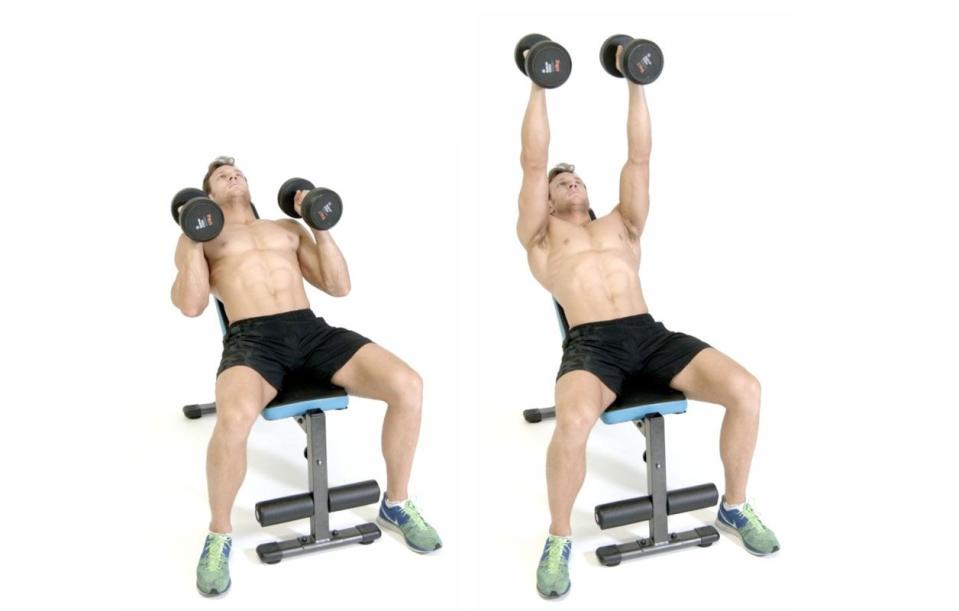
Lie on a bench set to high inclined angle, press two dumbbells up above your chest (A), slowly lower both bells over 3-4 seconds, keeping your elbows at a slight angle to your torso, until both dumbbells touch your chest (B) explosively press the bells back to full lockout and repeat.
A2. Dumbbell deadlift x 10-15
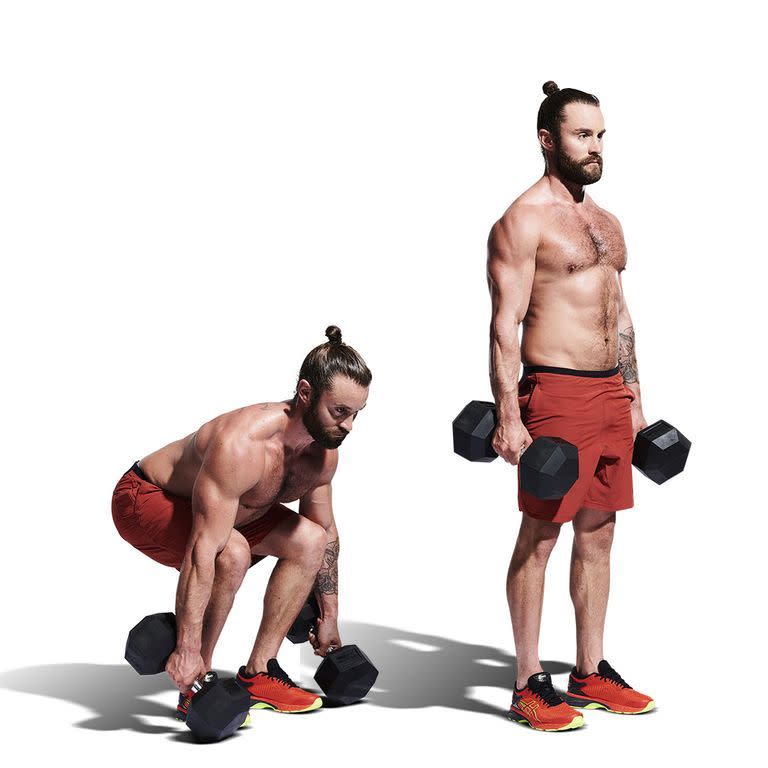
With your dumbbells on the floor just outside your feet, hinge down and grip them with soft knees and back as flat as possible (A). Squeeze your lats, grip your weights and stand upright, ‘pushing the ground away’ with your feet (B). Take a deep breath and slowly reverse the movement, returning your weights to the ground, keeping them close to your body throughout. Your arms should be hanging straight throughout this movement; think of them as hooks.
3 sets of:
B1. Goblet squats x 10-15

Hold a single dumbbell close to your chest (A). Sink your hips back and slowly over a count of 3 seconds descend into a squat (B). Your elbows should come in between your knees at the bottom. Drive back up explosively. Repeat. Pay attention to that tempo, it matters.
B2. Chest supported rows x 6-10
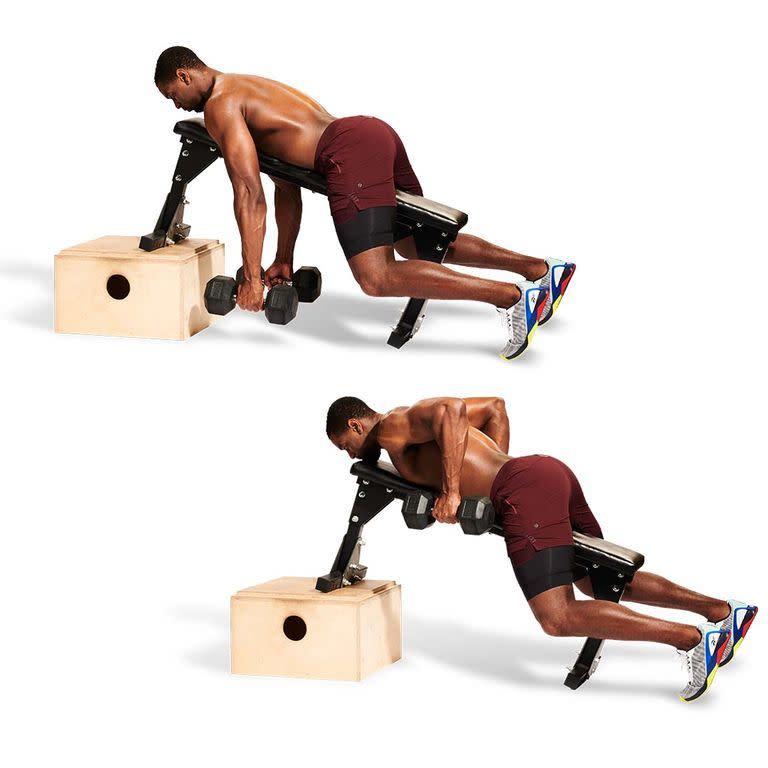
Set an adjustable bench to around 45 degrees or prop a flat bench up with a box. Position yourself face down with your chest on the pad, holding a pair of dumbbells (A). Staying tight to the bench, row both dumbbells up towards your hips, pause (B) and slowly lower before repeating.
3 sets of:
C1. Reverse lunges x 20-30 (total)
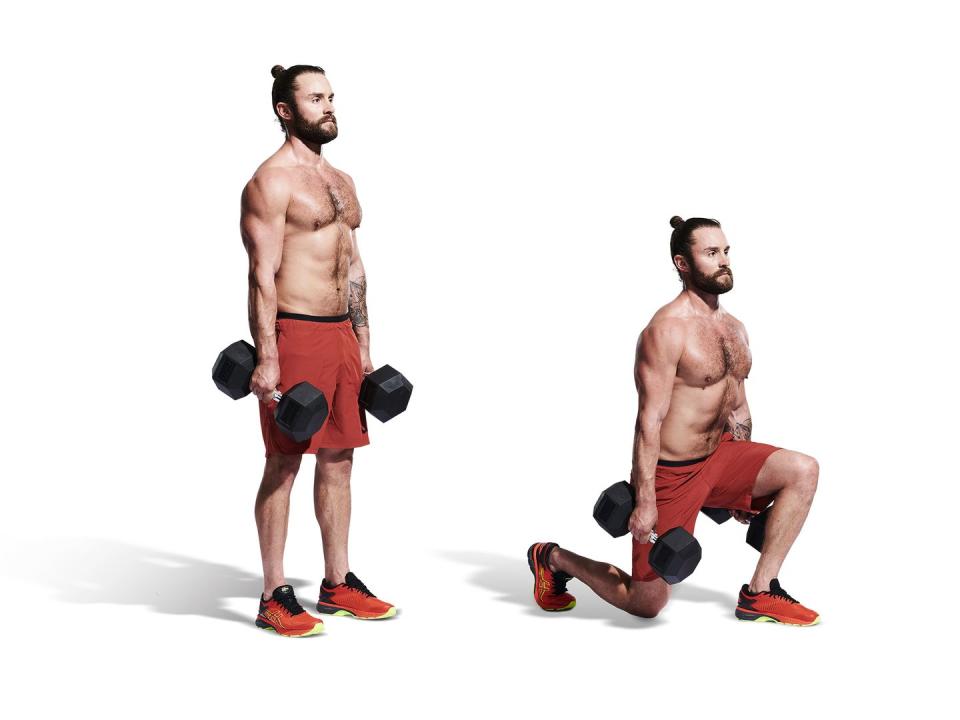
Stand tall holding a pair of dumbbells with straight arms by your sides (A). Keeping your chest up at all times, take a step backward with one leg, bending your front knee until the back knee touches the ground (B). Stand up explosively, pause and repeat with the other leg. Complete 20-30 total reps, counting each leg as 1 rep.
C2. Press-ups x 10-15
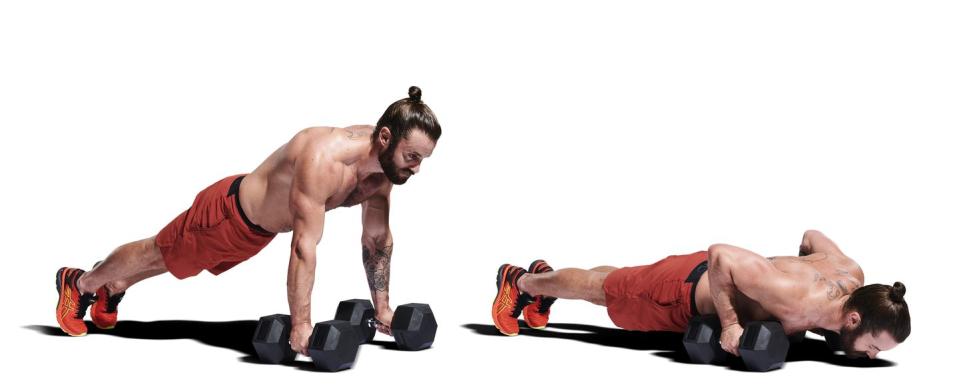
Assume a strong plank position, with your core tight and hands on your dumbbells (A). Slowly lower your chest to the floor (B). Keep your elbows from flaring as you push back up explosively. Once you reach full lockout, pause and repeat for a second rep.
C3. Laying V-up x 8-12

Lie flat on the floor pushing your lower back into the ground (A). Lift your shoulders and legs up simultaneously, reaching for your toes in one movement (B). Slowly lower yourself back to a lying position and repeat. Don’t worry if you can’t quite get to your toes, yet, just get your legs and arms up as high as possible and keep in control of the movement. You’ll get there!
D. Cardio intervals 30 secs work / 30 secs rest x 10 minutes
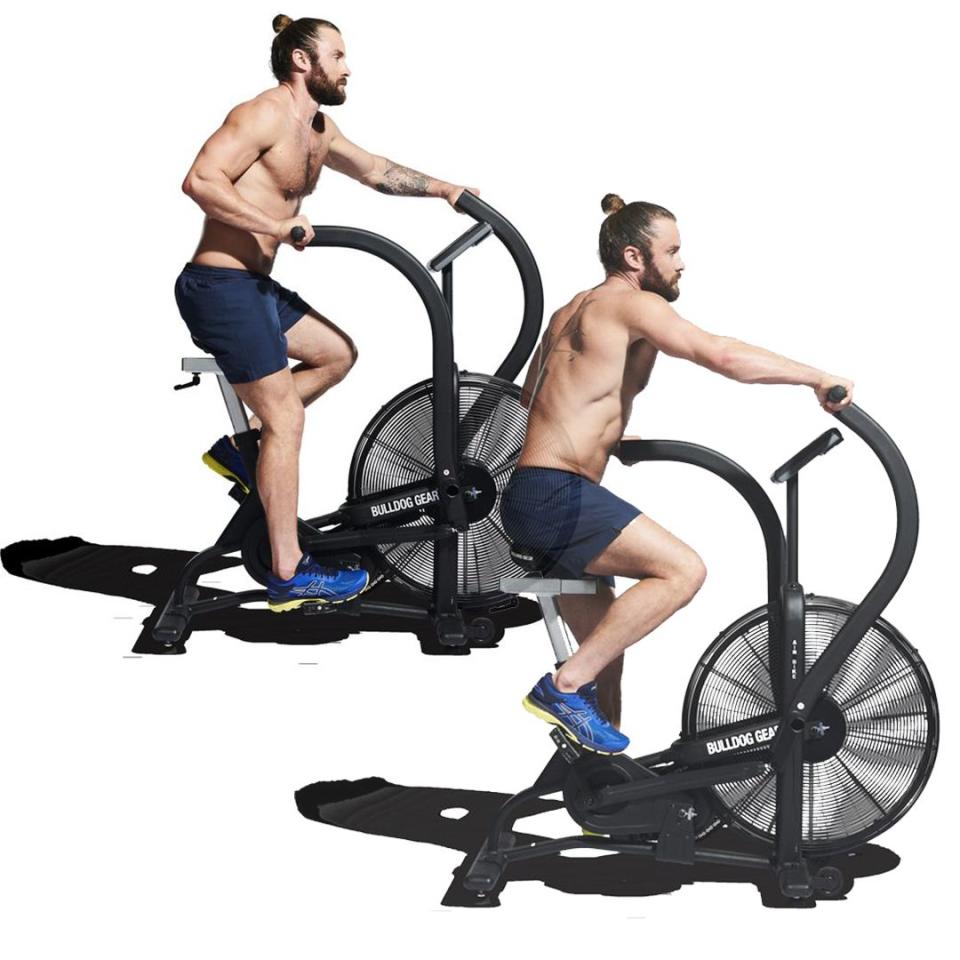
Pick a cardio machine of your choice, perform sprints outside, or perform burpee efforts. Alternate between 30 seconds of work with 30 seconds rest for 10 total minutes. Keep a track of your total distance achieved, or another measure such as reps or calories. Your aim is to gradually increase this number each week, ensuring progress and pushing your fitness.
More workouts like this
The Men's Health Dumbbell Club 150+ Muscle Building Dumbbell Only Workouts
This Dumbbell Interval Workout Packs a Full-Body Punch in Just 25 Minutes
Build Full-Body Size Fast with the Old-School 8x8 Method in Just 40 Minutes
Build Muscle and Stamina in Half Hour with Our Full-Body 30 Workout
You Might Also Like


